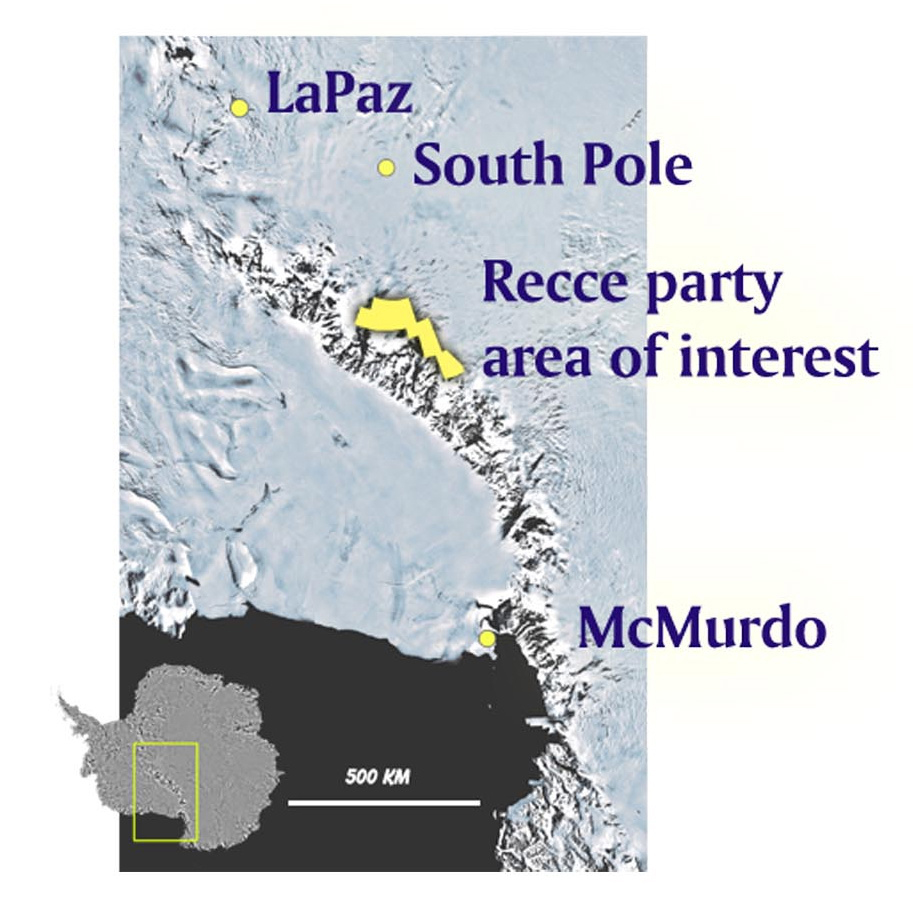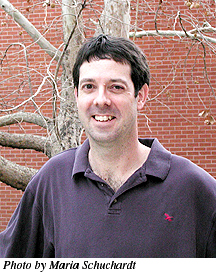 Program News
Program NewsKevin Righter JSC New Meteorites
This newsletter contains classifications for 443 new meteorites from the 2000, 2001 and 2002 ANSMET collections. They include samples from the MacAlpine Hills, LaPaz Icefields, Pecora Escarpment, Meteorite Hills, and Odell Glacier. Petrographic descriptions are given for 25 of the new meteorites: 1 lunar basalt, 1 lunar basaltic breccia, 3 acapulcoites, 1 aubrite, 1 diogenite, 2 eucrites, 3 howardites, 1 R chondrite, 8 carbonaceous chondrites, 2 enstatite chondrites, 1 ordinary chondrite impact melt breccia, and 1 mesosiderite. The lunar basalt (LAP02205) is unbrecciated and unlike any lunar meteorite in our collection and may have similarities to other mare basalt meteorites such as Y793169 or NWA 032/479.
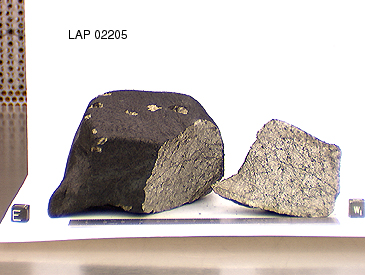
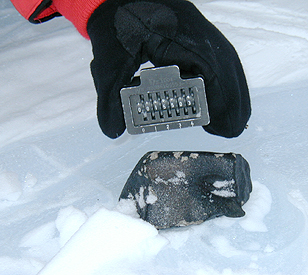
Changes to the Classification Database on the JSC Website
Changes have been made to the website classification database that will make navigation of our collection easier. First, many of the classifications have been updated. For instance, QUE94535 is now properly called a winonaite, and ALH85085 (and related) are now called CH chondrites. In most cases the names have been updated to be consistent with Grady's (2000) Catalogue of Meteorites. Second, search buttons have been added for more meteorite types. The achondrite section has been expanded, and the carbonaceous and enstatite sections are now searchable by petrologic type or compositional type. There are new buttons for "ungrouped" achondrites and chondrites. Finally, search result tables now report both the 'original' weight and 'available' weight of a given meteorite. This should be helpful to those making requests to MWG. The URL for the classification database is:
http://sn-charon.jsc.nasa.gov/DBSearch/AntMet/MetClass-Form.asp
Send Us Your Publications
In an effort to track detailed studies of samples in the collection, we are requesting that investigators send in a list of publications that report data obtained on ANSMET collected Antarctic meteorites. There is an enormous amount of data that has been obtained on meteorites in our collection and in order to maintain curation of the highest quality, we wish to compile information for each sample. This information will ONLY be used to help us document analysis of individual meteorites; it may eventually be available to the public through an information database. Please send (a listing only, not the actual publications, reprint or preprints) to kevin.righter-1@nasa.gov.
Upcoming 2003-2004 Field Season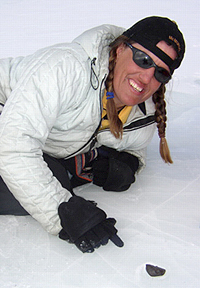
Nancy Chabot, ANSMET
At this moment, Ralph Harvey is in Greenland hauling a sled and searching for meteorites, so the task falls to me to write this update about our upcoming Antarctic field season. Just as in the 2002-03 season, we plan to operate two independent ANSMET field teams this year; made possible by additional funding from NASA to supplement the continuing support from NSF. One team will be dedicated to the systematic recovery of meteorites from an icefield that is known to have a large meteorite concentration. The other team will perform high-level reconnaissance of quite promising, but also difficult to reach sites.
The systematic searching team: An eight person team, supported by NSF funding, will spend the season at the LaPaz icefield, about 350 km from the South Pole Station. This exceptionally large icefield was visited by the reconnaissance ANSMET team just last field season. During their two week visit, the 2002-03 reconnaissance team recovered more than 250 meteorites, including some rare specimens that are reported in this newsletter. This season, the team will begin the first systematic searches of the LaPaz icefield. Ralph will spend his 14th season leading this team for the first half of the season, after which I will transfer from the reconnaissance team to replace him. This season, we are sorry to not have Jamie Pierce our mountaineer on the 2002-03 systematic team, who decided to enjoy some quality time at home instead. But we're pleased to have as our mountaineer Bill McCormick, who has a great deal of Antarctic experience but is joining his first ANSMET team.
The reconnaissance team: The second team, funded by NASA, will be smaller and more mobile than the systematic team. The four person team will conduct reconnaissance meteorite searches on a number of icefields surrounding the headwaters of the Beardmore Glacier in the region of the central Transantarctic Mountains. Twelve potential target sites have been selected, most of which are just slightly south of the QUE locale. The current plan is for the team to generally move from the Marsh Glacier region in the north to the Shackleton Glacier region in the south. The length of stay at key sites will vary; constant re-evaluation of priorities, depending on the density of meteorite finds, icefield conditions, and logistical needs will be necessary. It is expected that the team will likely visit around 6 of the 12 target sites, moving via Twin Otter aircraft frequently. John Schutt, ANSMET mountaineer of 22 previous seasons, will be with this team for the entire season, and I will be joining them for the first half.
Both teams are scheduled to begin their southbound trips near the end of November. If everything goes according to the current plans, both teams will have field seasons that are just over six weeks in length, and team members will likely be home by late January or early February 2004.
